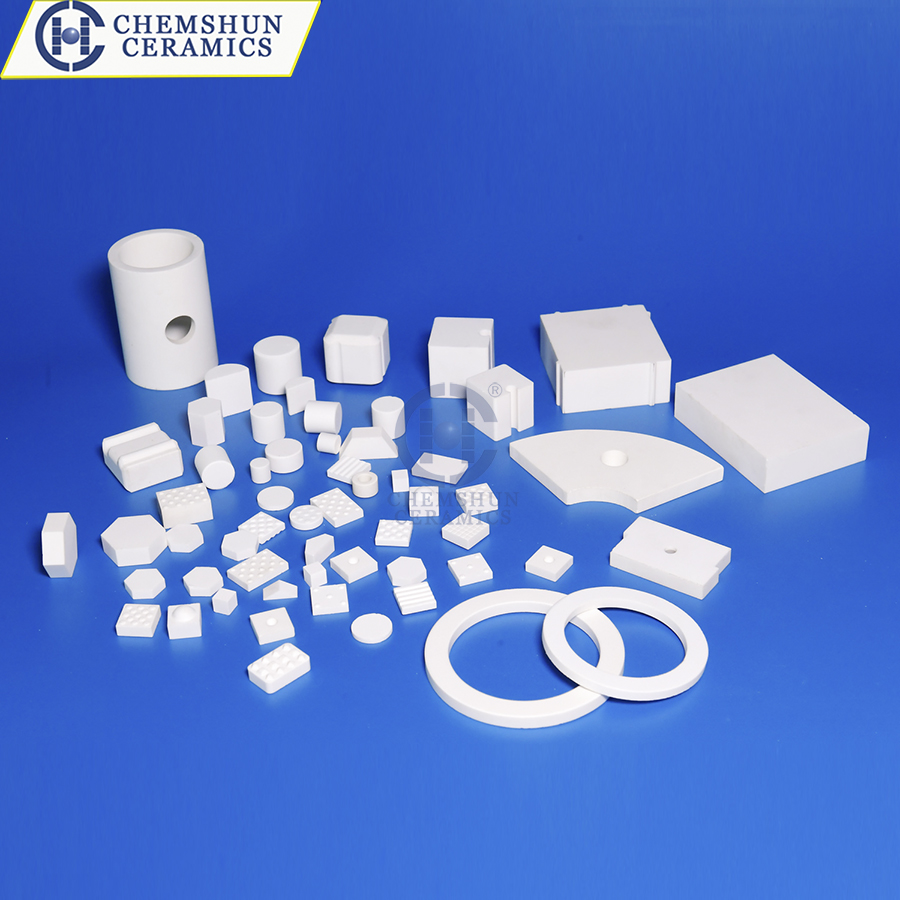Top articles
- High-purity 99.7% alumina ceramics helpful to semiconductor manufacturing technology
- Alumina Ceramic Grinding Balls: High-Efficiency Solutions for Industrial Grinding
- How to Select Suitable Wear-Resistant Ceramic Lining Tiles in the Mining Industry
- Advantages of Ceramic Rubber Composite Liners in Industrial Applications
- How to Install Alumina Ceramic Liners for Long-Lasting Adhesion?
- 99% alumina bulletproof ceramics are the preferred materials for protective devices
- Alumina Ceramic Substrates:Characteristics,Advantages,Disadvantages,and Applications
- Why do alumina industrial ceramics wear out?
- The reason of abrasion resistant ceramic tiles falling off when pasted on equipment
- Seven aspects of advantages & applications of alumina ceramic substrates
Latest articles
- High-purity 99.7% alumina ceramics helpful to semiconductor manufacturing technology
- Alumina Ceramic Grinding Balls: High-Efficiency Solutions for Industrial Grinding
- How to Select Suitable Wear-Resistant Ceramic Lining Tiles in the Mining Industry
- Advantages of Ceramic Rubber Composite Liners in Industrial Applications
- How to Install Alumina Ceramic Liners for Long-Lasting Adhesion?
- Welcome to EXPOMIN 2025
- 99% alumina bulletproof ceramics are the preferred materials for protective devices
- Alumina Ceramic Substrates:Characteristics,Advantages,Disadvantages,and Applications
- Why do alumina industrial ceramics wear out?
- Chemshun Ceramics Chinese New Year Holiday Notice
Your browsing history

Summary of eight forming processes of structural ceramics ②
Ceramic forming is an important part of the ceramic preparation process, the forming technology to a large extent determines the uniformity of the body and the ability to prepare complex shaped parts, and directly affects the reliability of the material and the cost of the final ceramic parts.
3, Injection molding
Ceramic injection molding is a new process for preparing ceramic parts, which is developed by combining polymer injection molding with ceramic preparation technology.
The manufacturing process of ceramic injection molding mainly includes four links:
① The suitable organic carrier and ceramic powder are mixed, dried and granulated at a certain temperature to obtain a mixture for injection;
② The injection mixture after mixing is heated into a viscous melt in the injection molding machine, injected into the metal mold at a certain temperature and pressure at high speed, cooled and solidified into the desired shape of the billet, and then demoulded;
③Degreasing: by heating or other physical and chemical methods, the organic matter in the injection molding body is removed;
④ Sintering: the ceramic blank after degreasing is densified and sintered at high temperature to obtain the dense ceramic parts with the required appearance shape, dimensional accuracy and microstructure.
Advantages of injection molding:
① can be directly made into various shapes of complex small ceramic parts, reduce the cost of expensive ceramic processing.
②High degree of mechanization and automation, short production time, only a few tenths to a few hundredths of the time used for pouring molding and hot pressing molding. And can be automated production, production process management and control is also very convenient, suitable for mass production.
③ Due to the good fluidity of the binder, the density of the injection molding billet is quite uniform.
Application: This technology has the most advantages for mass production of ceramic products with high dimensional accuracy and complex shapes. At present, ceramic injection molding has been widely used in various ceramic powders and various engineering ceramic products. Various precision ceramic parts prepared by this process have been used in aviation, automobile, machinery, energy, optical communication, life medicine and other fields.
4, Isostatic pressing
At present, isostatic pressing is the main forming method for producing alumina ceramic balls.
Hot isostatic pressing process is to apply high pressure (50-200MPa) and high temperature (400-2000℃) to the outer surface of the machined parts by inert gases (such as argon and nitrogen), and the increased temperature and pressure make the material through plastic flow and diffusion to eliminate the gap under the surface. The hot isostatic pressing process can achieve a uniform and fast cooling process through thin-wall prestressed winding units, and the production efficiency is increased by 70% compared with the natural cooling process.
The cold isostatic pressing process can apply higher pressures to ceramic or metal powders, up to 100-600 mpa at room temperature or slightly higher temperatures (< 93 ° C), and sintered to final strength. Hot isostatic pressing and cold isostatic pressing technologies allow ceramic manufacturers to increase productivity while controlling material properties.
At present, cold isostatic pressing technology is widely used in daily ceramics, architectural ceramics, special ceramics and other fields. For example, plates, dishes, alumina grinding balls, alumina chemical packing balls, firebricks, ceramic sticks, spark plugs, high-frequency porcelain sleeves, composite ceramics, etc.
Advantages of isostatic pressing:
① The pressure is transmitted from all directions, the compact density is evenly distributed, and the compact strength is high;
② The density of the blank is high, the uniform defect is less, and the firing shrinkage is lower than that of the general dry;
③ It can press parts with concave shape, slender parts and other complex shapes;
④ Low friction loss, low forming pressure;
⑤ Low mold cost.
Disadvantages of isostatic pressing: it is not easy to accurately control the size and shape of the billet, and the productivity is low, and it is not easy to automate.
See the next article for the remaining several structural ceramic molding processes.









